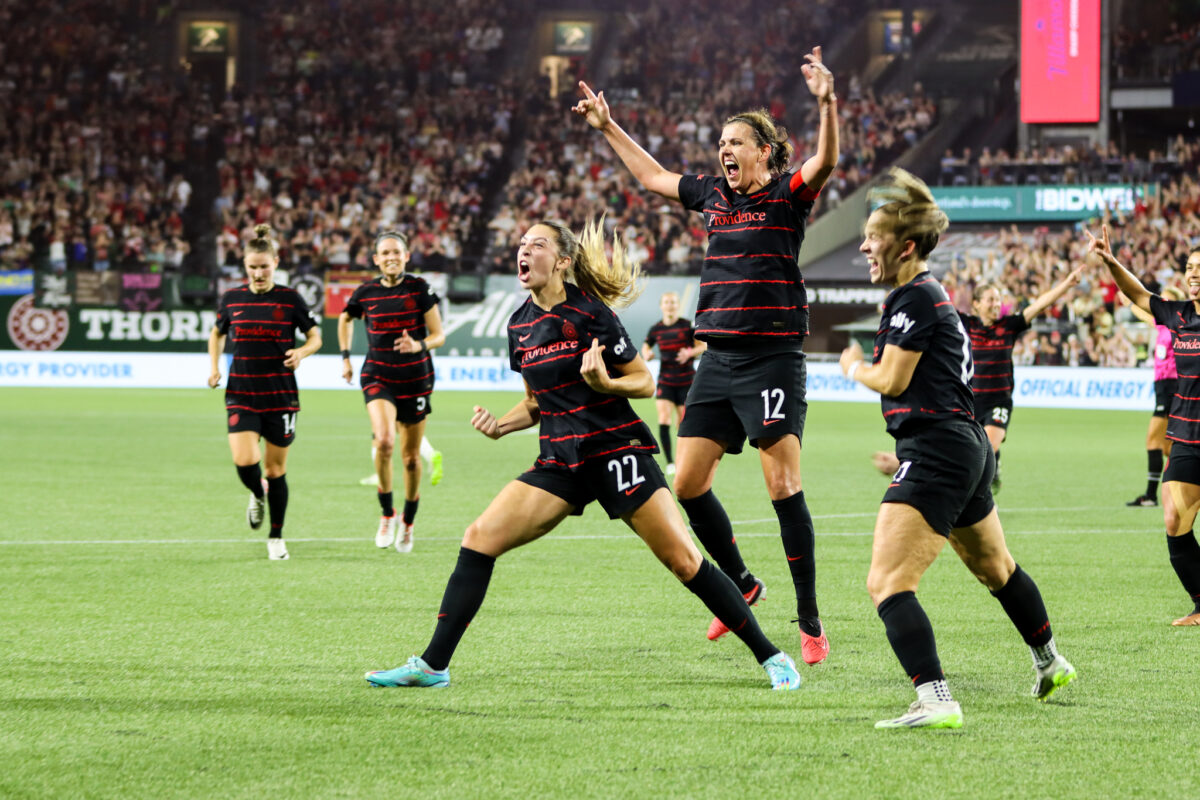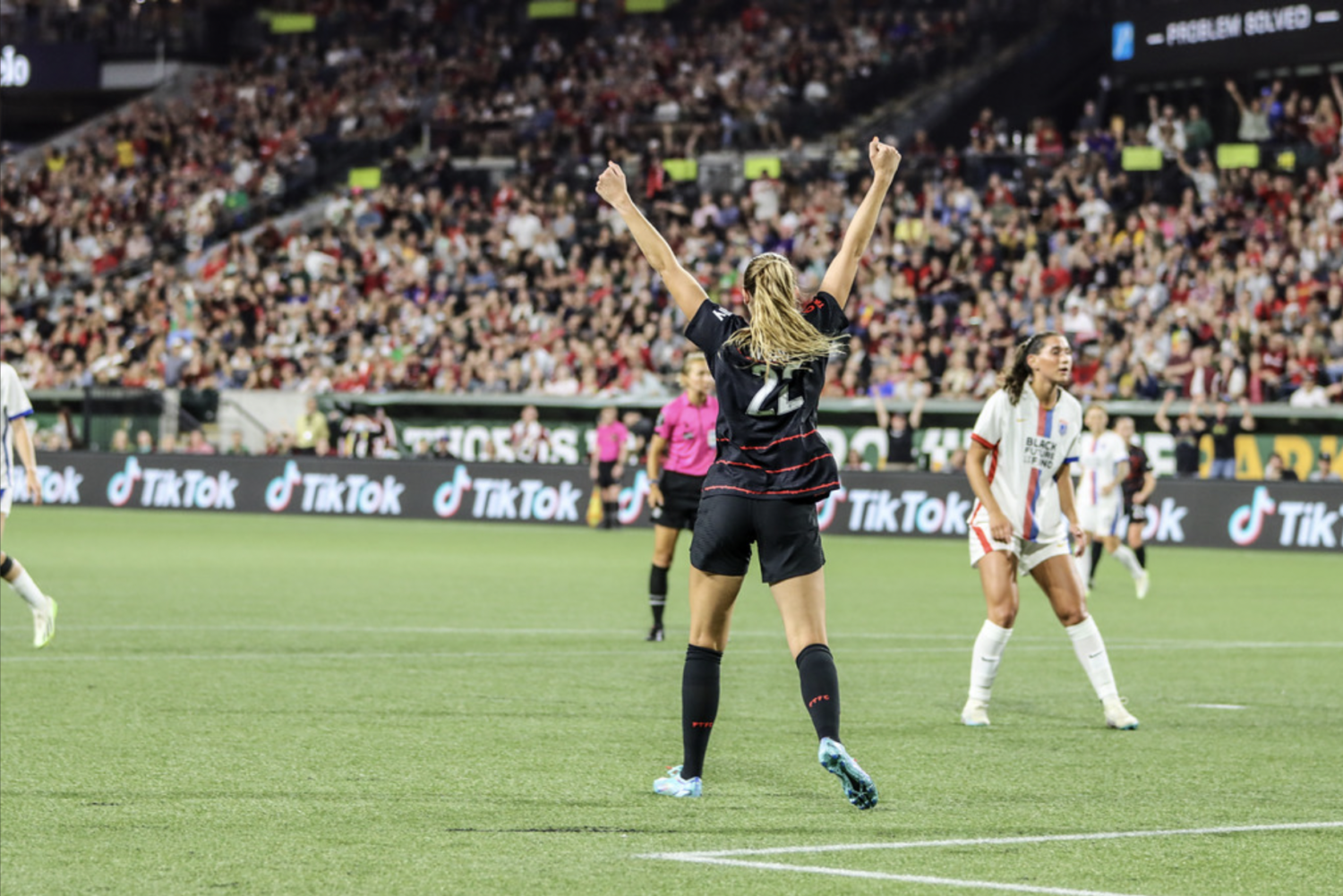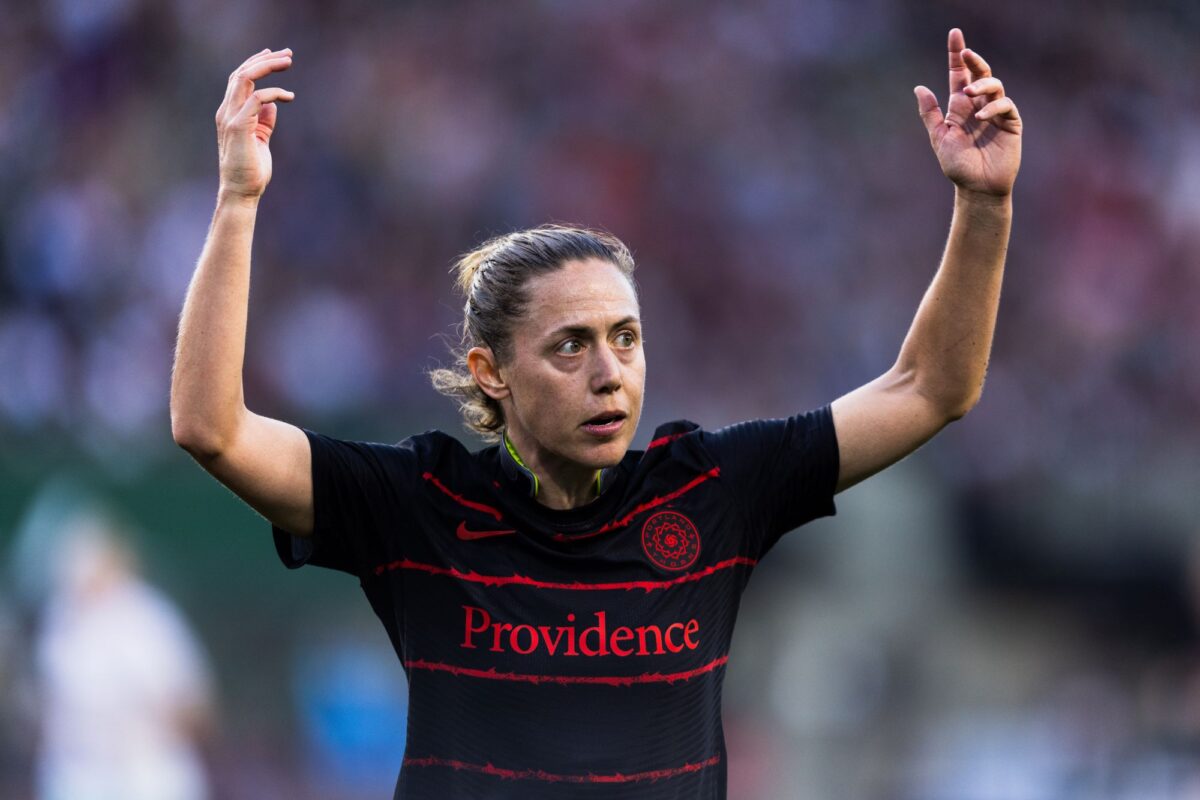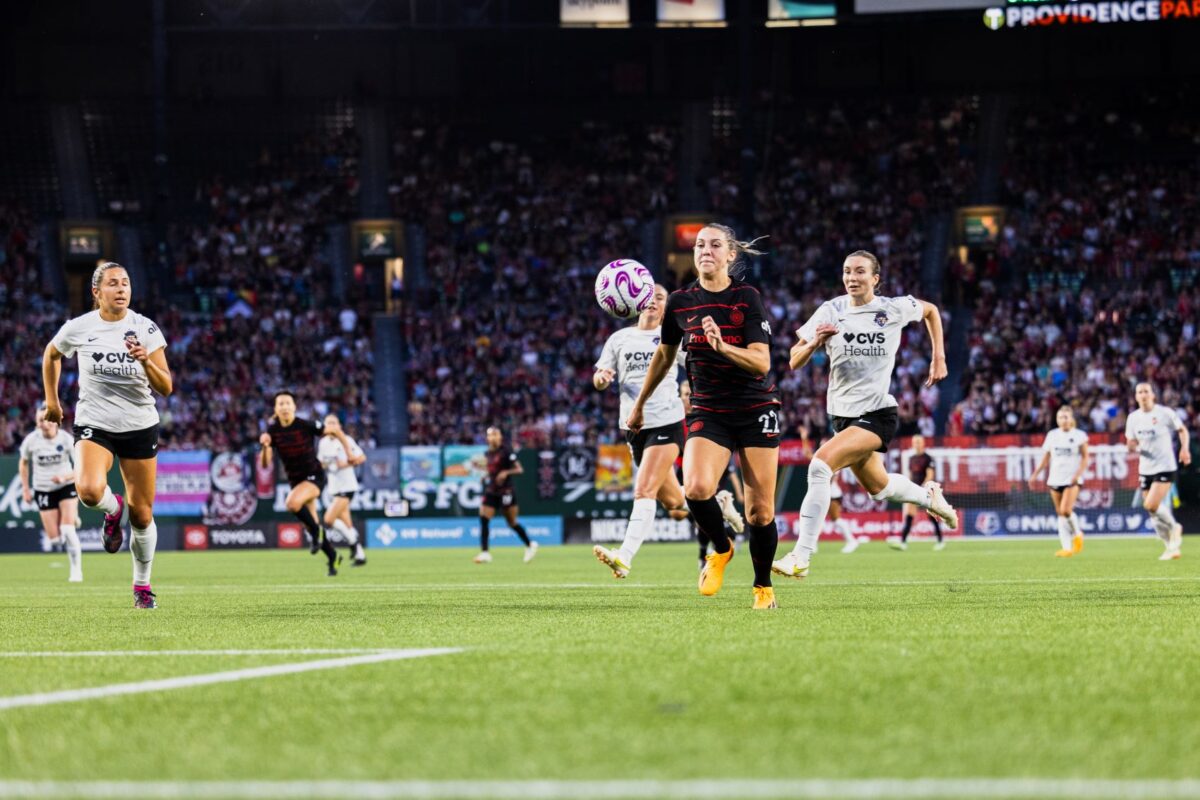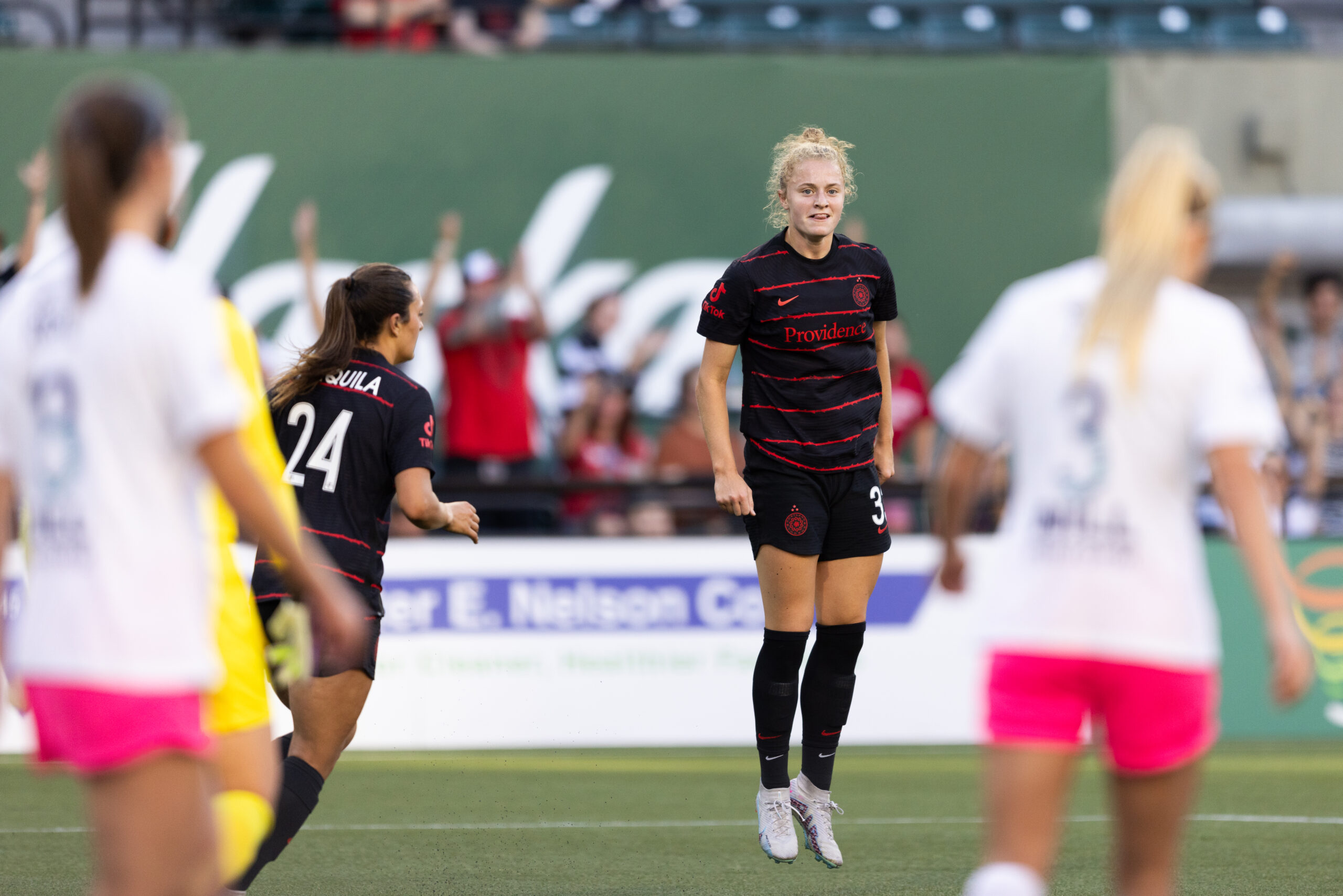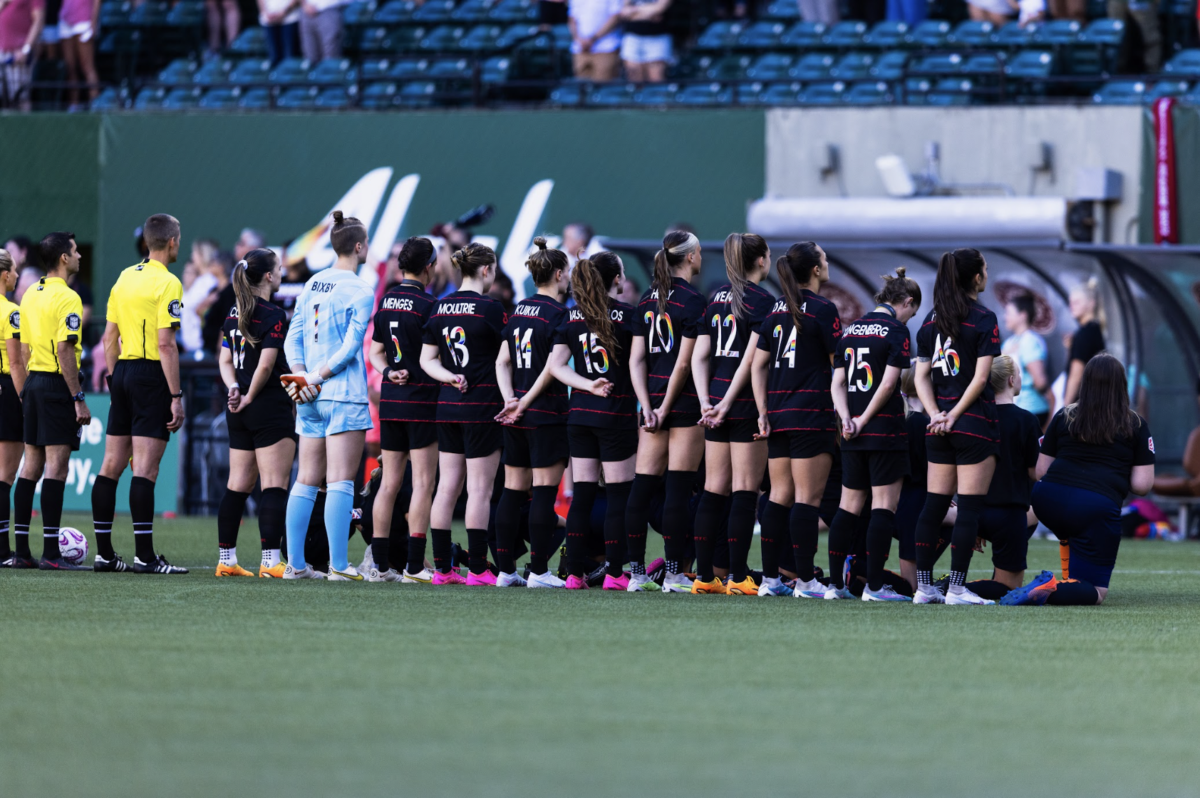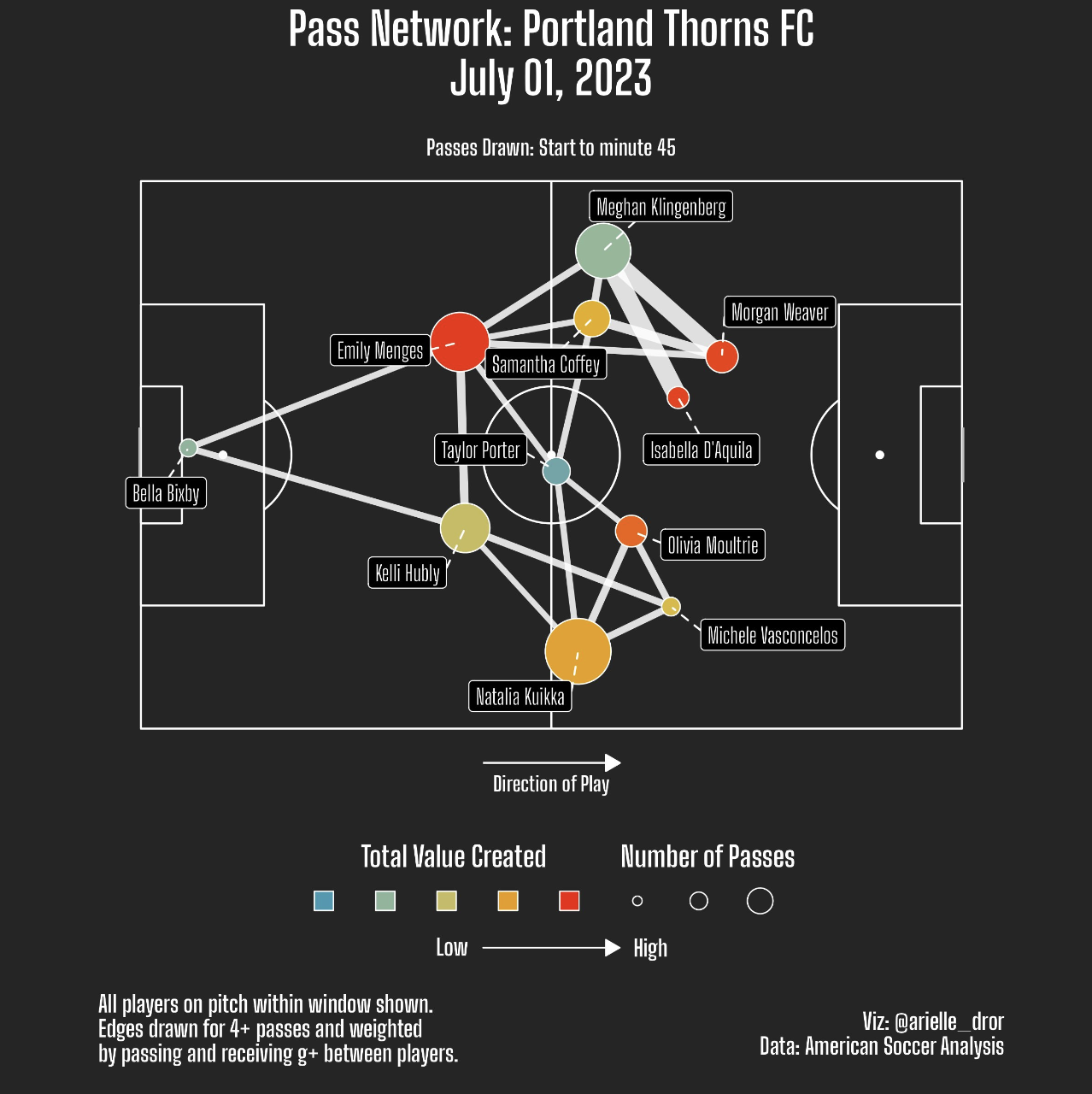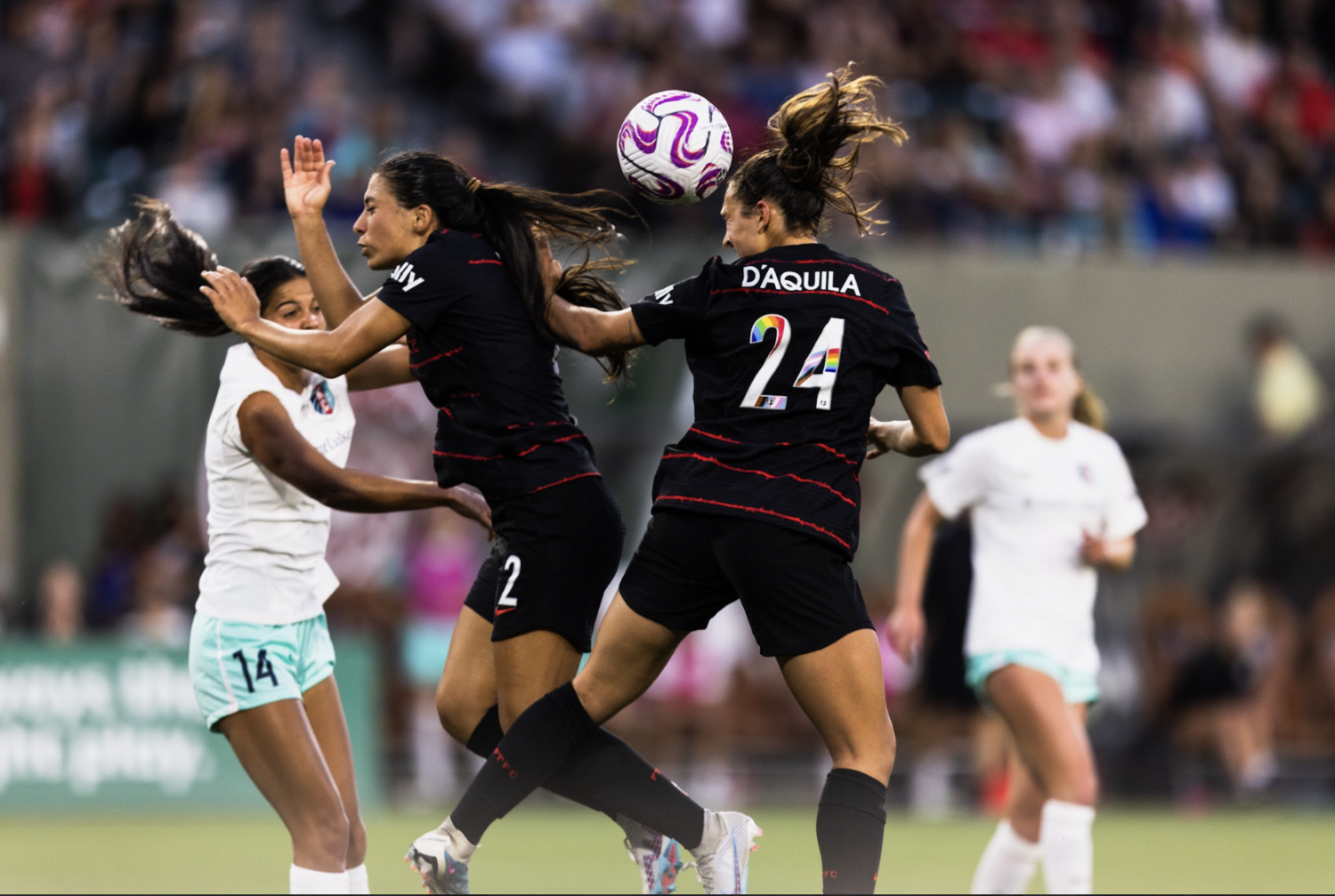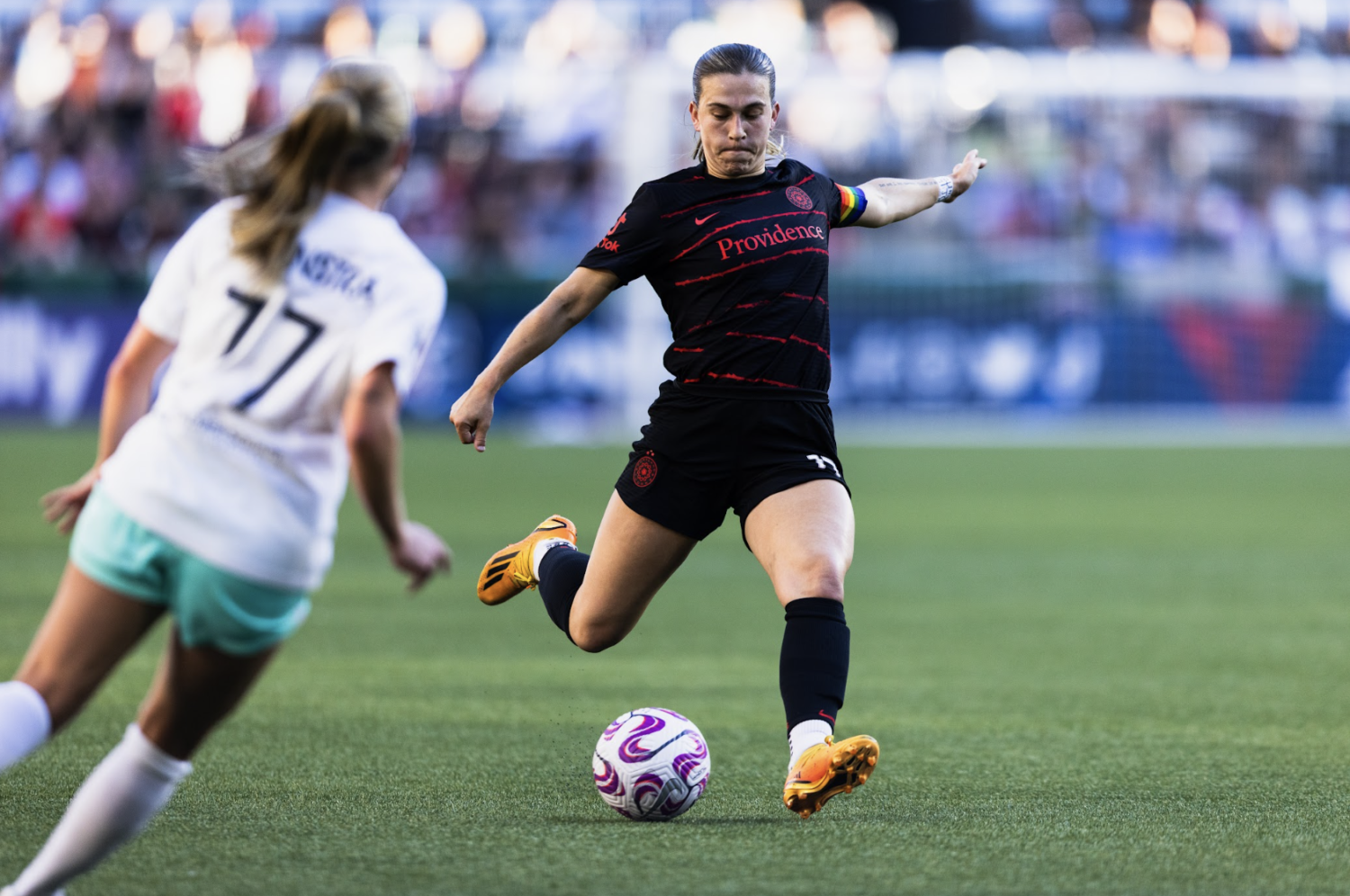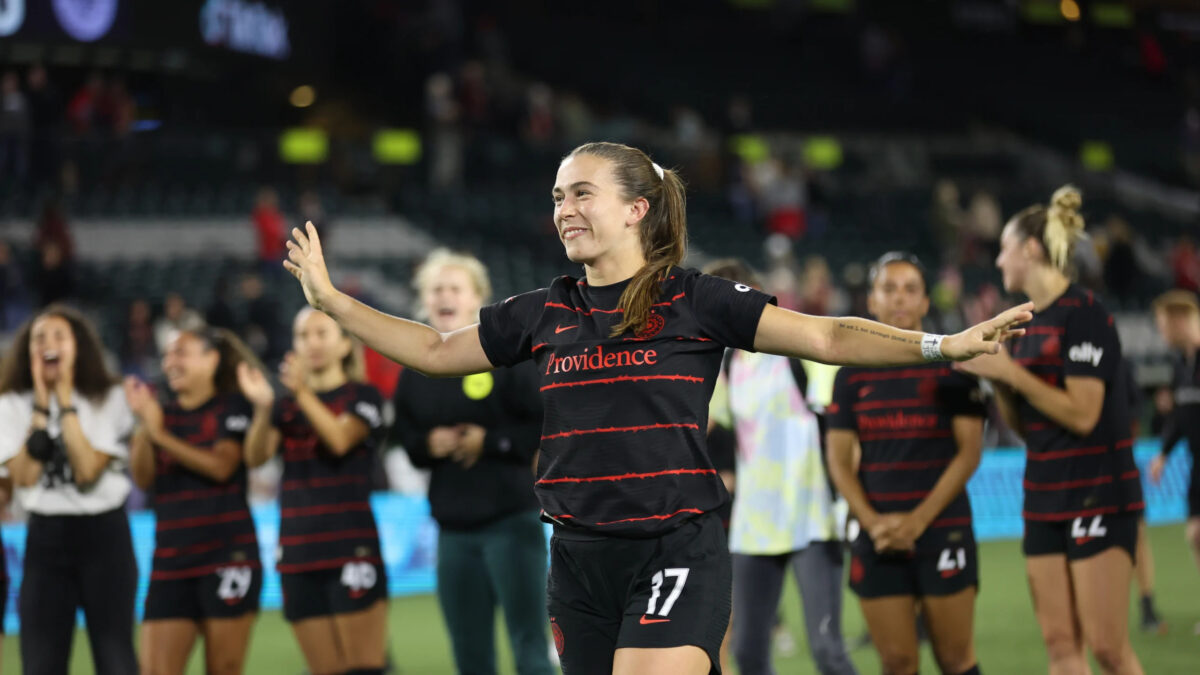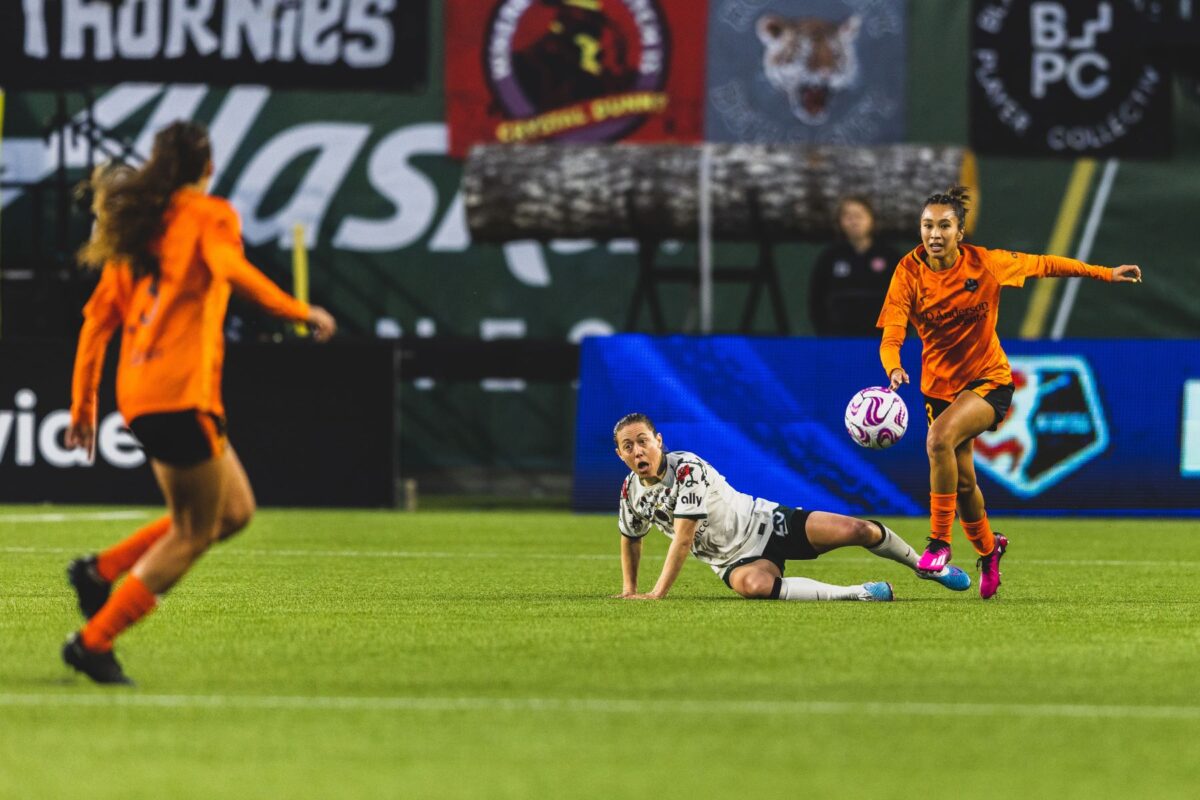If I had a nickel for every time the Portland Thorns had a meltdown on the last day of the regular season that caused them to lose the shield, I’d have two nickels. Which isn’t a lot, but it’s weird that it happened twice.
The Thorns suffered their worst beat of the season, and in recent memory, on the final day of the season in a horrible 5-1 loss to Angel City away from home. Going into the final day, the Thorns were in the driver’s seat, needing a win to secure the shield for the second time in three years—and to knock Angel City out of the postseason. Instead, everything went horribly wrong on the day.
There aren’t any excuses for the way the Thorns played on Sunday afternoon. They had eight total shots (a season low), 0.68 expected goals from those shots, and generally looked lackluster on the field. Portland had more possession, more passes, and a higher passing accuracy than ACFC, but they couldn’t threaten Los Angeles’ goal.
All season, the Thorns have been a tactical mystery. Head coach Mike Norris stuck with the majority of the same players starting and coming off the bench, with changes only coming through player injuries or international absences. There was an overall lack of adjustment when teams were able to break down the Thorns’ 4-4-2 and high press, and perhaps too heavy of a reliance on Sophia Smith’s godlike skills. But, even without a competent coach, the Thorns’ roster was stronger and much more capable of pulling off a win than Angel City’s, and they should have had the shield easily wrapped up.
Meghan Klingenberg summed it up perfectly postgame, when she said, “The part that kills me is that we did this last year. You’re supposed to learn from moments that happen to you and your team in big games.”
Or like Sam Coffey said, “disappointed doesn’t cut it, or it’s not even the right word. I think I’m in shock.”
I, too, am in shock because on the whole, ACFC was not playing exceptional soccer (besides the Sydney Leroux bicycle kick). The other four of their goals came from egregious lapses in focus from the Thorns’ backline and keeper, which allowed Angel City to get free looks on goal.
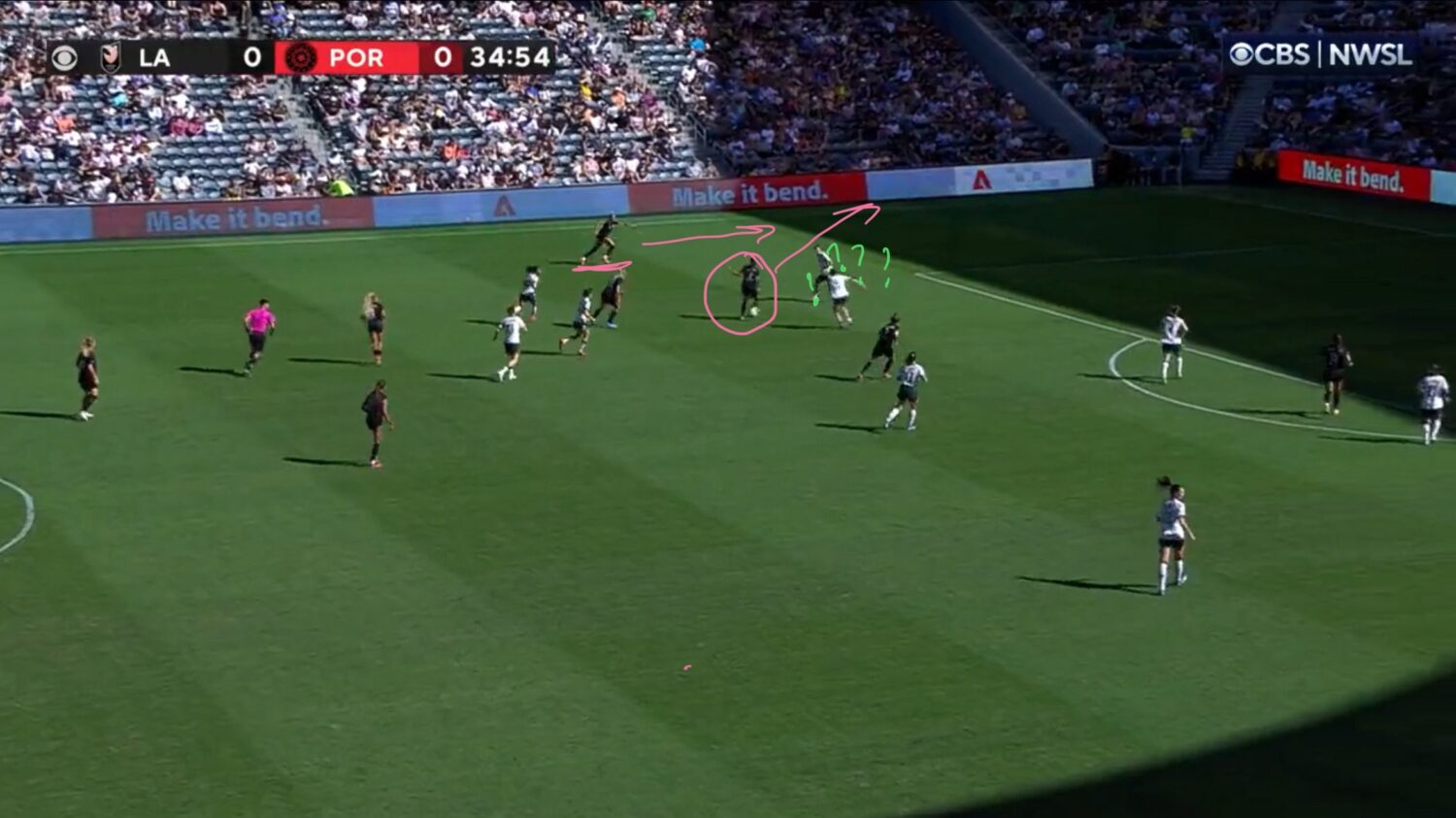
In the buildup to Angel City’s first goal, we can see two Thorns players (green marks) putting pressure on Leroux (pink circle). Neither one looking at M.A. Vignola (pink underline), who is looking for the through ball. Due to Natalia Kuikka and Emily Menges’ proximity to Leroux, Vignola can easily enter the box with a slipped pass and take on Bella Bixby one-on-one. That’s exactly what she does.
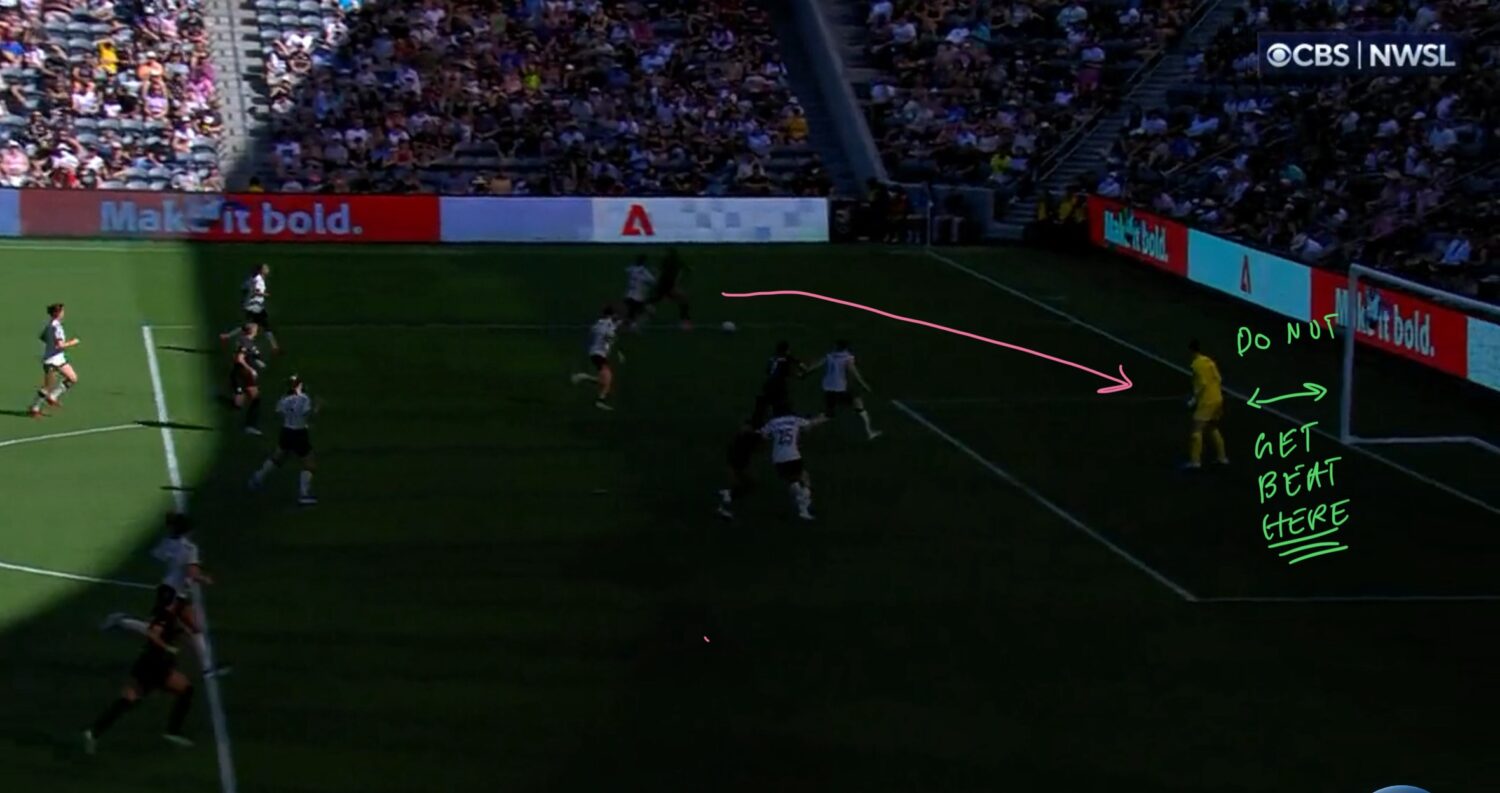
Ignoring the horrible color grading of the broadcast, you can see where Vignola is a complete step ahead of Kuikka and in on goal. Bixby is standing in the middle of the six-yard box, watching the play. You can call it an exceptional shot, or you can call it a major goalkeeping error, but the bottom line is that Bixby gets beaten where a keeper should never be beaten: their near post. Both Kuikka getting burned on the outside and Bixby being beaten at the near post are simple positioning and concentration errors that should not happen for a team and players of the Thorns’ caliber. Unfortunately, these aren’t the only times they happened over those 90 minutes.

Angel City’s third goal was almost an identical play on the same side of the pitch. In the shadows of the left side of the above image, Crystal Dunn is putting pressure on an ACFC player, who is able to get off a pass to an overlapping runner. Even if Dunn is an outstanding left back, she cannot physically mark two players at once. Once again, Kuikka (green circle) is not properly tracking her winger (pink circle), who suddenly finds themself in acres of space to pick out their final pass.
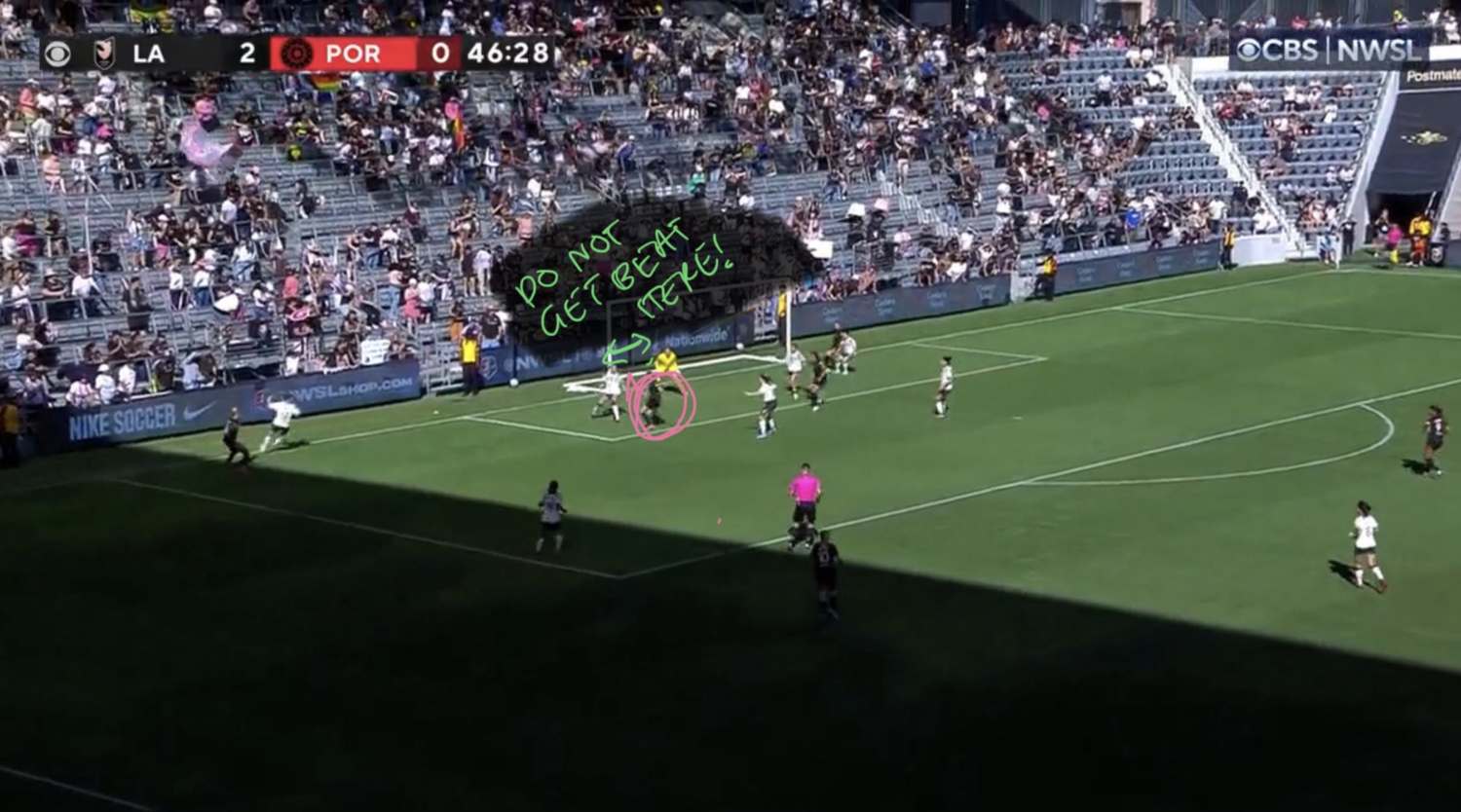 The Angel City player doesn’t make the best choice and passes it right into traffic in the six-yard box, where it looks like they are covered both by Bixby and Kelli Hubly at the near post. So, how does this play end in a goal? Honestly, I have no idea. Maybe it would have been a weird fluke, but when it’s the third goal given up in one game in the same manner, it speaks more to a positional or structural error for the backline.
The Angel City player doesn’t make the best choice and passes it right into traffic in the six-yard box, where it looks like they are covered both by Bixby and Kelli Hubly at the near post. So, how does this play end in a goal? Honestly, I have no idea. Maybe it would have been a weird fluke, but when it’s the third goal given up in one game in the same manner, it speaks more to a positional or structural error for the backline.
It does not seem as though the back four players are on the same page in terms of which opponents and what spaces they are supposed to be marking. Additionally, by having a starting midfield of Coffey, Christine Sinclair, Dunn, and Olivia Moultrie, Norris has essentially limited the number of players on the field, as Sinc and Moultrie do not track back as much as Dunn does. Without the double pivot of Coffey and Rocky Rodríguez, the central areas of the field are much more exposed. This forces Kuikka and Kling to pinch inwards more than they normally do, giving ACFC’s wingers acres of space. When going up against a team like Angel City—who, in their previous game, only listed two (2) defenders on their team sheet—you know that they are going to want to run at backlines the entire game. A reasonable choice would be to provide additional cover there in the form of the Coffey-Rodríguez double pivot. Instead, Norris chose to start Sinclair in a must-win game against a team full of young players.
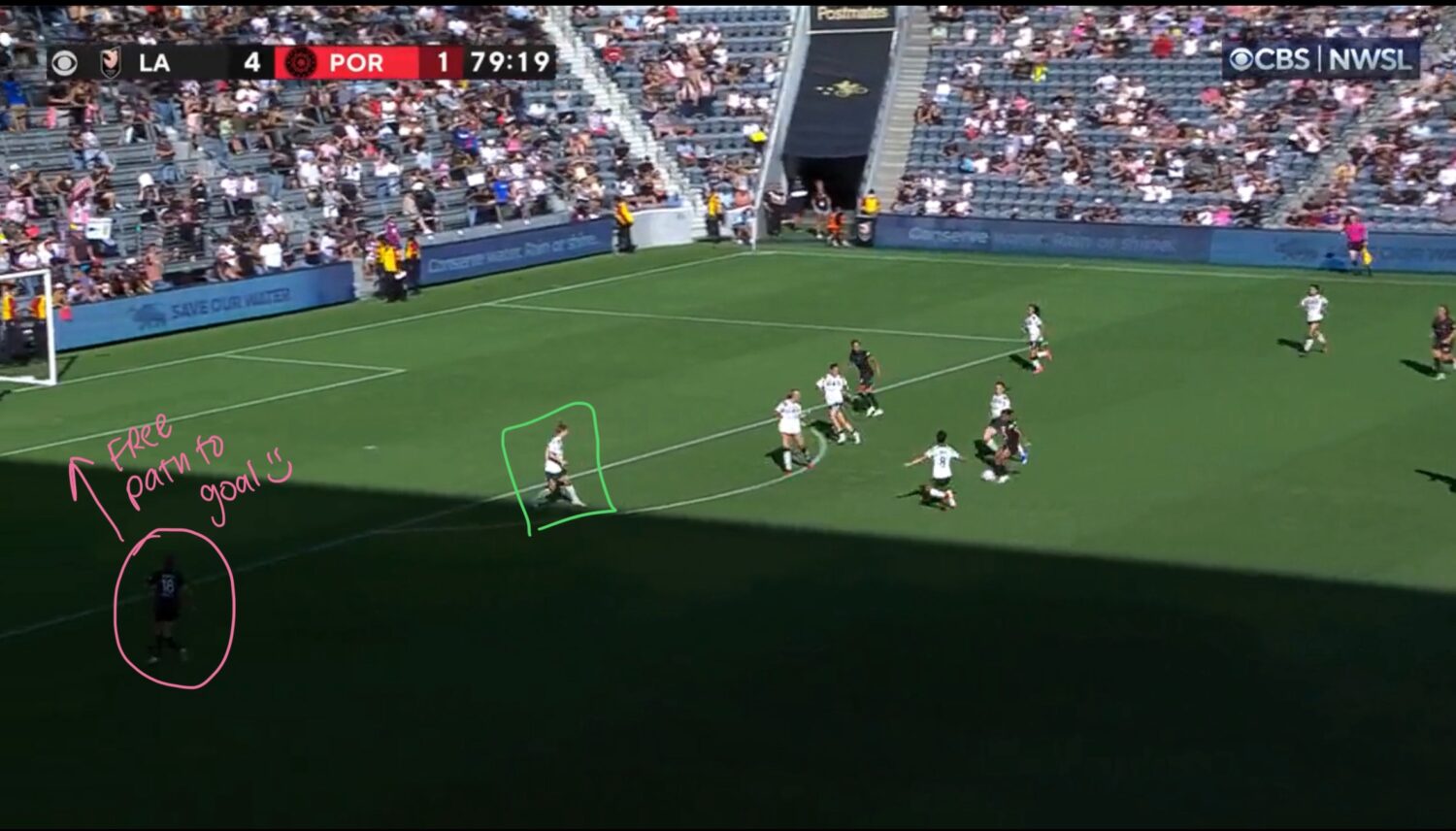 Angel City’s fifth (!!!!!!) goal came nearly immediately after Hina Sugita pulled one back for the Thorns. Once again, it came up the Thorns’ right side, attacking Kuikka, who had not been subbed out yet. Four players collapse around Alyssa Thompson at the edge of the 18-yard box, with Kuikka (green square) alone in the middle. Jun Endo (pink circle) is unmarked at the edge of the 18, squarely in front of goal. Thompson makes the pass in front of Kuikka, who cannot recover in time, and suddenly Angel City had regained their four-goal cushion.
Angel City’s fifth (!!!!!!) goal came nearly immediately after Hina Sugita pulled one back for the Thorns. Once again, it came up the Thorns’ right side, attacking Kuikka, who had not been subbed out yet. Four players collapse around Alyssa Thompson at the edge of the 18-yard box, with Kuikka (green square) alone in the middle. Jun Endo (pink circle) is unmarked at the edge of the 18, squarely in front of goal. Thompson makes the pass in front of Kuikka, who cannot recover in time, and suddenly Angel City had regained their four-goal cushion.
Thankfully, the game ended soon after that, and we didn’t have to watch the Thorns breakdown any further. Portland has struggled all season with consistency and stability in their games, and if there was ever a time to fix that problem it would be right now. They are guaranteed one more game—at Providence Park, no less—to show the world that they are a high-performing team who deserved to get the coveted bye into the semifinal rounds. But right now, they look like a team that doesn’t even deserve to be in the playoffs.

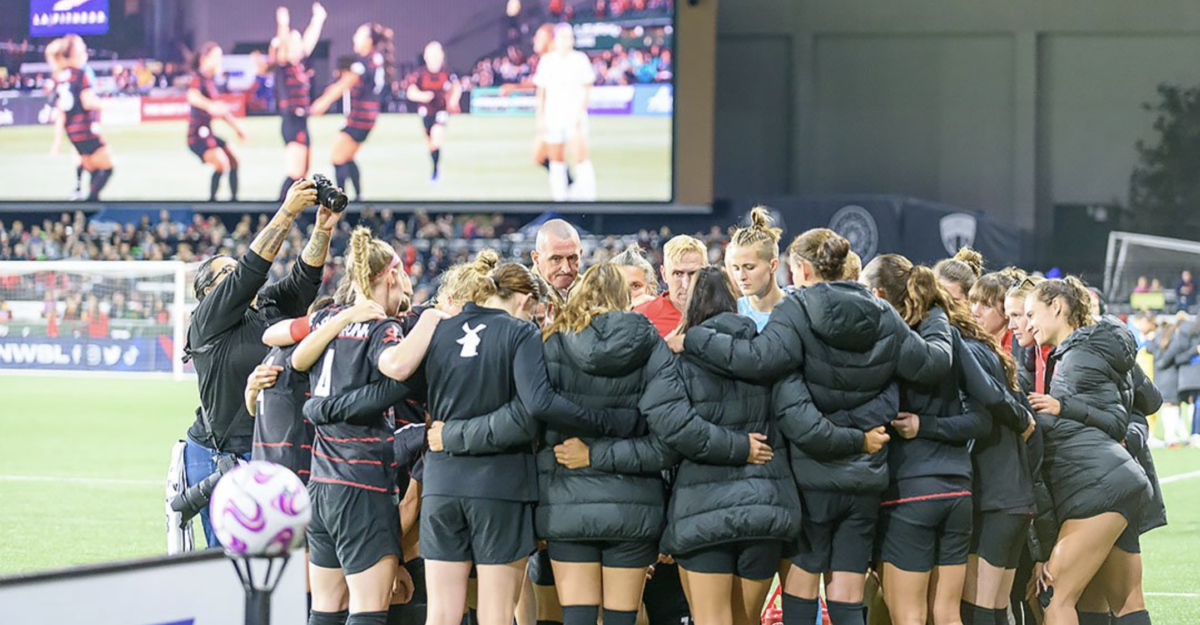
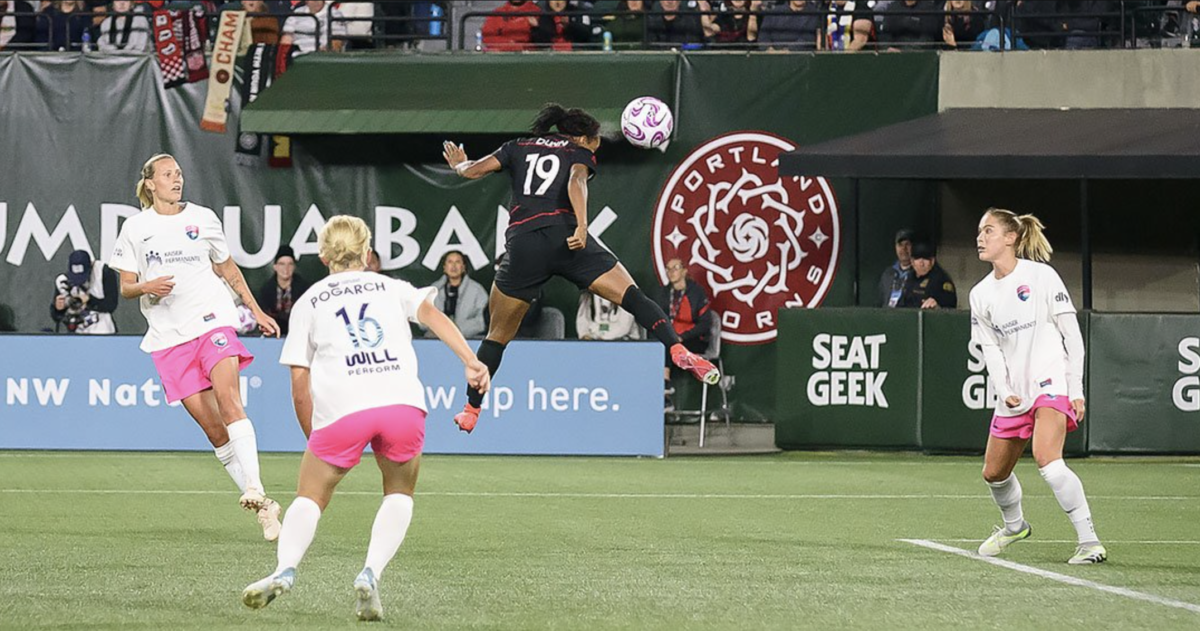
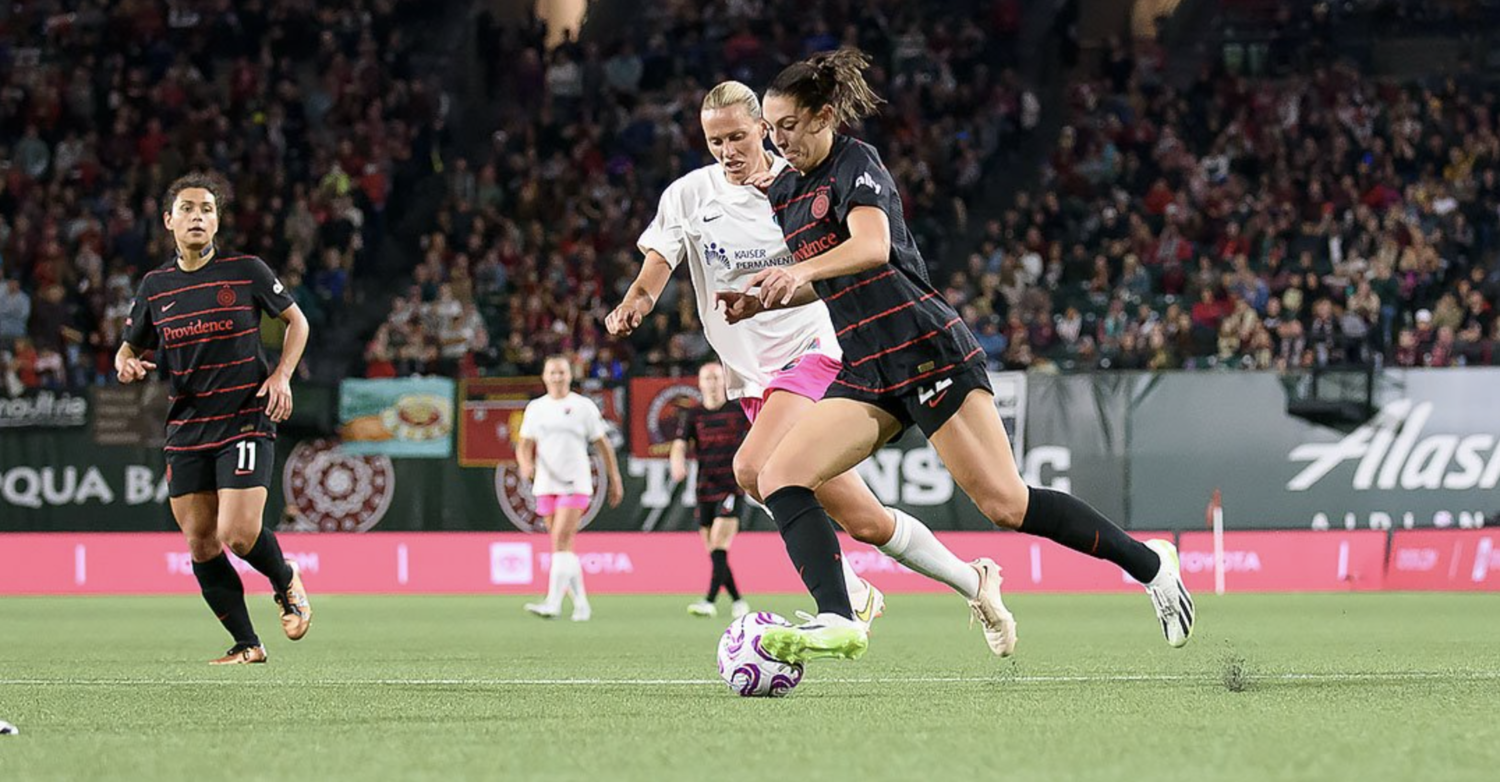
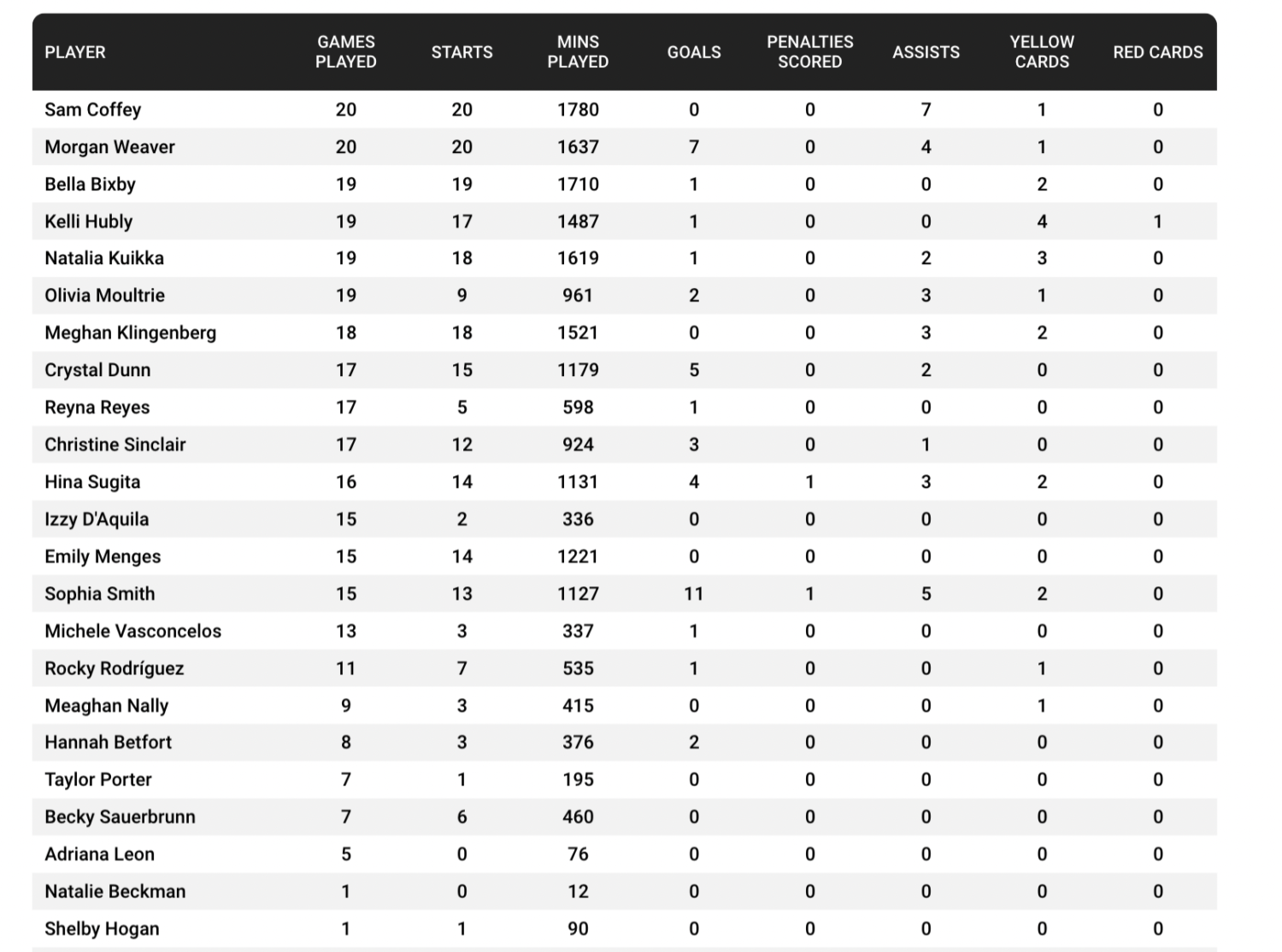
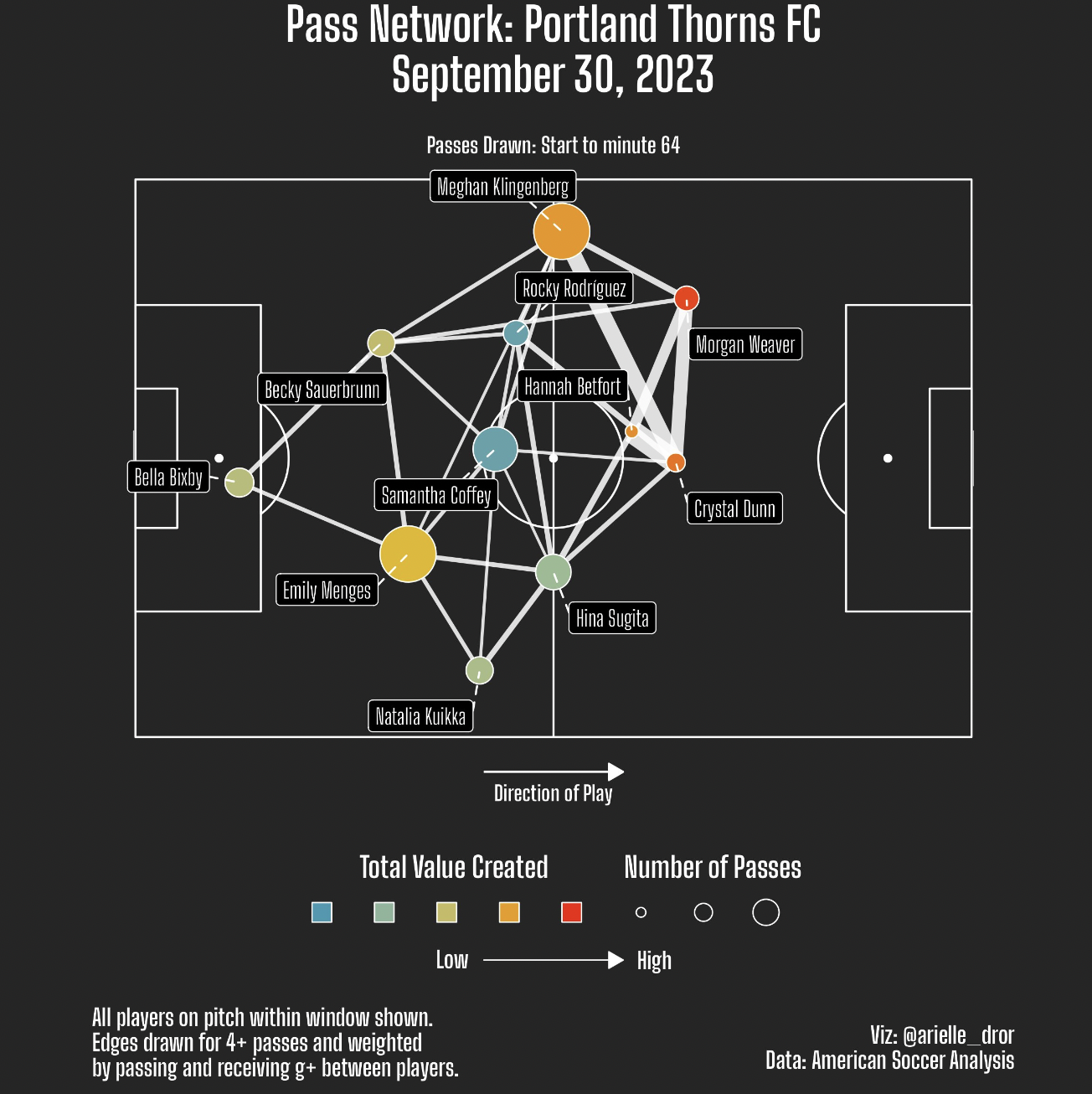
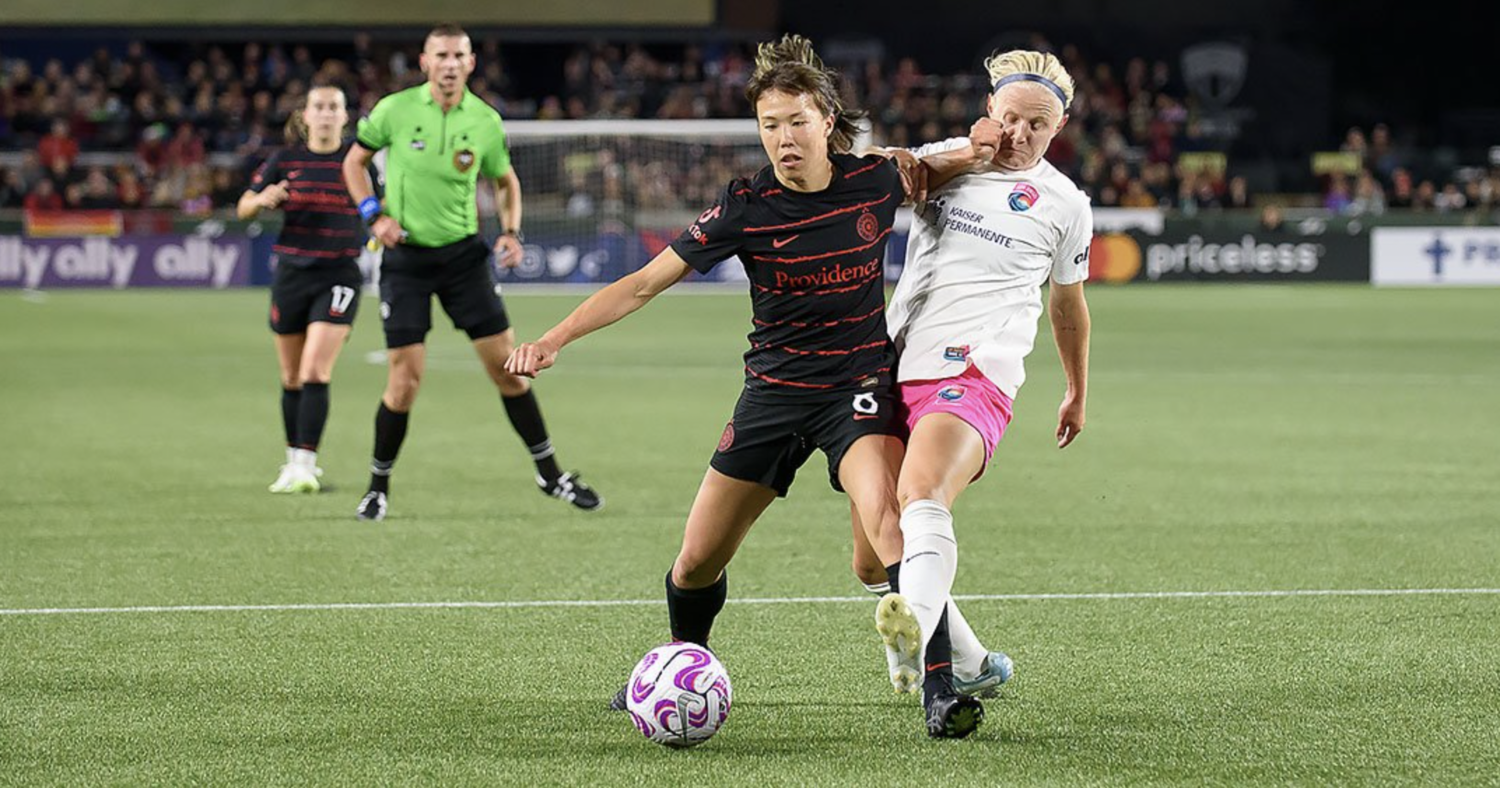

 Unlock with Patreon
Unlock with Patreon